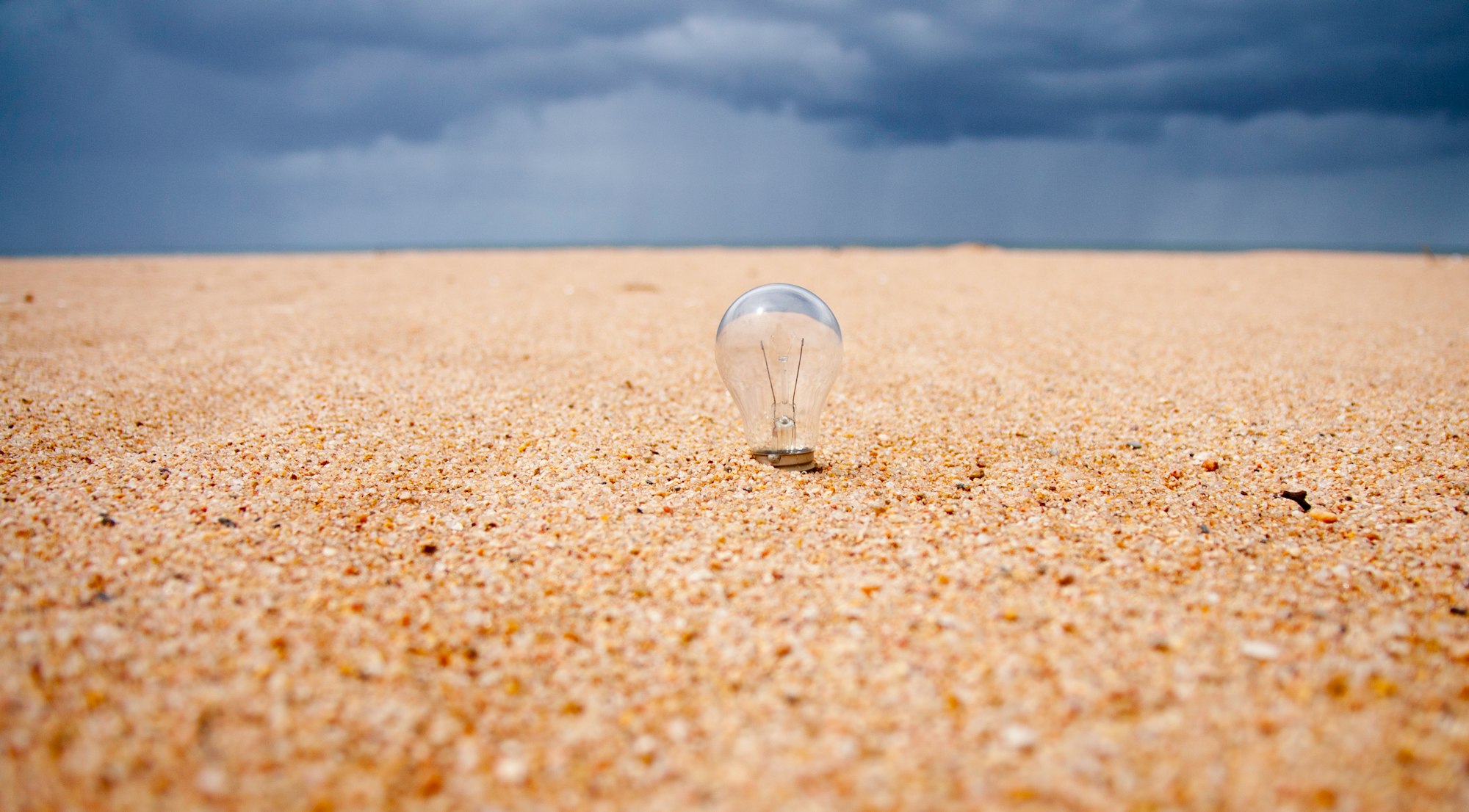In this article, I explain the most common myths about creativity and how you can easily overcome them.
When I was in my early 20s, I wanted to write a book. But I told myself I wasn’t ready to start writing because I didn’t have any good ideas and it wasn’t the right time. I also believed I wasn’t creative enough to write.
I bought into one of the most common myths about creativity: a need for a eureka moment. Some aspiring creatives, also say things like,
I need a great idea. I need the right tools. It’s not the right time.
Everyone has creative potential; fewer people put their innate talents to use. So, what are the most common myths about creativity, and how can you overcome them?
Contents
- 1. Creativity Is Solitary
- 2. Not Everyone Is Creative
- 3. Creativity Requires Original Ideas
- 4. I Need One Great Idea
- 5. I’m Waiting For A Eureka Moment
- 6. It’s Not My Job
- 7. I Need More Resources
- 8. Creativity Only Comes In Bursts
- Myths About The Creative Process: The Final Word
- FAQs on Myths About Creativity
1. Creativity Is Solitary
Multitasking, endless meetings and business are all anathemas to creativity. The best creatives spend a good chunk of their working day immersed in deep creative work.
They write, record, draw or compose for several hours without interruption or distraction. But creativity isn’t solely a solitary experience. Every big creative project is the result of an effort by many different people.
Consider the 2019 film The Irishman. A critical and commercial success, director Martin Scorsese is acknowledged as the creator behind the film, and the cast gets a lots of acclaim. But, it’s also the result of efforts by scriptwriter Steven Zaillian and hundreds of other creatives, including producers, set designers and sound engineers.
Scorsese said about it,
“So when Bob came across this story and gave it to me, he said: ‘You know, this is an amazing part for Joe, if he wants to do it.’ And also for Al Pacino.”
Like you, I don’t write film scripts. But it’s the same principle for professionals working in the creator economy. We spend hours writing a book, recording podcasts or creating a video series alone, but we still need the help of an editor to polish the result.
A good one will and fix issues and even propose suggestions that improve the result.
Here’s another example: How many professional authors spend time designing book covers?
They’re better off writing thank tinkering in Illustrator. But a good book cover can sell a book. It captures the attention of readers.
So, a professional author learns how to collaborate with their book cover designer. They say, Here’s what my book is about, and this is who it’s for.
2. Not Everyone Is Creative
Creative thinking is for artists, musicians, composers and literary writers, right?
After all, they spend time composing music and writing stories and coming up with ideas from nothing.
The lone creator myth is a falsehood. It’s wrong to argue only reclusive artists can engage in creative thinking and problem-solving. Many different types and levels of creativity exist, some solitary and some collaborative.
If you cook a meal for your family based on available ingredients in the fridge, that’s creative. If you start and build a profitable business, that’s creative.
If you contribute to a brainstorming session at work, that’s creative. And if you can build out a creative plan for your team, that counts too.
Creativity isn’t confined to the arts. It’s for every human being.
Learn how to get over your fear of creativity.
3. Creativity Requires Original Ideas

Aspiring and frustrated creatives say all of the best ideas are taken. They watch a popular film like The Irishman, read a bestselling book or listen to a highly-streamed album and say, “I should have thought of that.”
Or perhaps they look at a business succeeding in the creator economy and complain, “Hey! That was my idea.”
Creativity is less about originality than combining old ideas in interesting and novel ways.
The iPhone wasn’t the first camera with a smartphone, but it brought these old ideas together in a way that appealed to customers.
James Patterson didn’t write the first thriller book, but he knows how to retell old stories for a contemporary audience.
The Cryptopunks NFTs weren’t the first piece of artwork to sell online, but the team at Larvalabs understood how to combine the concept of digital artwork with the inbuilt scarcity of blockchain technology.
The Godfather director Francis Ford Coppola said it best about stealing and remixing old ideas:
”We want you, at first, to steal from us, because you can’t steal. You will take what we give you, and you will put it in your own voice, and that’s how you will find your voice.”
4. I Need One Great Idea
To an outsider, the creative process is daunting. It’s easy to sit around and say, “I’m not ready to start my business, to sell a book on Amazon Kindle or launch my podcast. I need to wait until I have one great idea. Then, I can finally start.”
But creative people understand it’s difficult to judge whether an idea is bad, good, or great at the start of any project. Instead, it’s better to focus on execution.
Creative people pick an idea, any idea, and they stick with it until done. They get feedback from the readers, followers, customers or the market. They also understand that one idea usually leads to another. And another.
And the bad ones? They are learning experiences creators can use to improve their craft.
Ever James Patterson has a few commercial and critical flops in his back catalogue.
5. I’m Waiting For A Eureka Moment

Jealous creatives say they need a Divine moment of inspiration board before starting to write a book, screenplay or recording a podcast.
They wait around for a Eureka moment whereby they think of a useful idea. Perhaps this flash of insight will happen in the shower or while out for a walk?
It might, but don’t buy into the Eureka myth. Creativity isn’t about waiting around all day until inspiration strikes.
You’re better off turning up at your desk at the same time every day and working on your project. Sometimes a great idea arrives; on other occasions, it won’t.

Turning up is a creative habit that supports an incubation period for innovative ideas. You’re giving signalling to the muse, subconscious or inner Scorsese this creative project matters. Or as English playwright and novelist William Somerset Maugham said,
“I write only when inspiration strikes. Fortunately it strikes every morning at nine o’clock sharp.”
6. It’s Not My Job
Some people say creativity is something they can’t or won’t spend time on because it’s not their job.
Creative work is for designers, writers, artists, musicians and other people in this company. It’s for the right side of the brain thinkers.
I’m a left-side of the brain thinker and am better off reviewing numbers, holding others accountable and building this business.
Creative problem-solving isn’t confined to one particular type of project or side of the brain. If you’re collaborating with other people, that’s creative work. And if you’re bringing insights from your discipline to a big project, that’s creative work. Everyone can their unique expertise and worldview to build a better product or ship something people want.
7. I Need More Resources
I can’t write my book because my laptop isn’t on the fritz. It’s not a good time for starting a side-hustle because my boss wants me to work late. And my podcast or YouTube channel? My microphone isn’t good enough. 🎤
Does any of these excuses sound familiar? I made all of them about past creative projects.
Sure, enough money and time are nice, but too much is overwhelming.
Remember Parkinson’s Law. It states work expands to consume all the available hours. The same applies to creative work. Give yourself a month, and it will take five weeks. Give yourself six months, and it’ll take seven. You already have everything you need.
Constraints of money, time or resources aid rather than hinder the creative process. Ask any author who’s ever finished a manuscript close to the deadline. Or the 1995 indie hit Before Sunrise, which filmmaker Richard Linklater made on a modest budget. A critical cult success, it spawned two even more popular sequels.
Film-star Ethan Hawke said about the constraint of money:
“The ‘Before’ trilogy is a bad example of pay gap because nobody got paid. I have no idea what Julie got paid or what I got paid. On those movies none of us were doing it for the money.”
8. Creativity Only Comes In Bursts
Feverish creative describes the moment when you feel energized and inspired by an idea. You sit down at your desk or in-studio and work and work. Entering flow state, all sense of time and place fades away. After several hours, you look around and can’t believe how much you’ve accomplished.
If only creative work could feel this good all the time. But, it’s difficult to sustain this type of focus all day, every day.
The initial canvas, score or draft is a starting point. As a creative, you can spend months or even years modifying it.
Sculpted creativity describes turning up and shaping a project carefully, deliberately and patiently. A writer edits their manuscript. A podcaster shapes the final cut of an episode. An entrepreneur refines an offer for their customers.
It’s hard work, but it’s part of the creative process. Both approaches to creative work are valid once you finish and ship the result.
Myths About The Creative Process: The Final Word
Creativity is an ambiguous concept that may explain why so many myths and misconceptions exist.
Turn up early and often. Work on what you got with what you have. And ship. Repeat. Concentrate on shipping creative ideas and getting feedback from readers, followers and customers. Use lessons from past creative projects to improve, and over time, you be surprised by your innate creativity.
FAQs on Myths About Creativity
How can you make sure you have enough creative ideas?
Capture ideas early and often, no matter their quality. Keep them in a trusted system that you review regularly. Use these ideas in your work so you can get feedback about what works. Usually, one good idea leads to another one. With practice and patience, you can increase your creative capacity.
What can kill creativity?
Close-mindedness and bad work habits can kill creativity. Perhaps you spend too much time multi-tasking, worry about what others will think or feel afraid to take risks. Or you may hold onto a limiting self-belief that not everyone is creative. On the other hand, exploring ideas, no matter how good or bad, can encourage more creative thinking.